Sāmoan illustrator Michel Mulipola recently sat down with Tokelauan/Sāmoan artist Moses Viliamu at the Whitireia Polytechnic Porirua Campus. In this discussion, the two creatives shared their experiences as Pasifika artists and illustrating their respective Pasifika Heroes books –Sāmoan Heroes and Tokelau Heroes, both written by David Riley and published by Reading Warrior.
Moses Viliamu was born and raised in Porirua. More known for his fine arts work, he has been a high school arts teacher, a mentor, a flag designer and a stalwart of the creative community in Porirua.
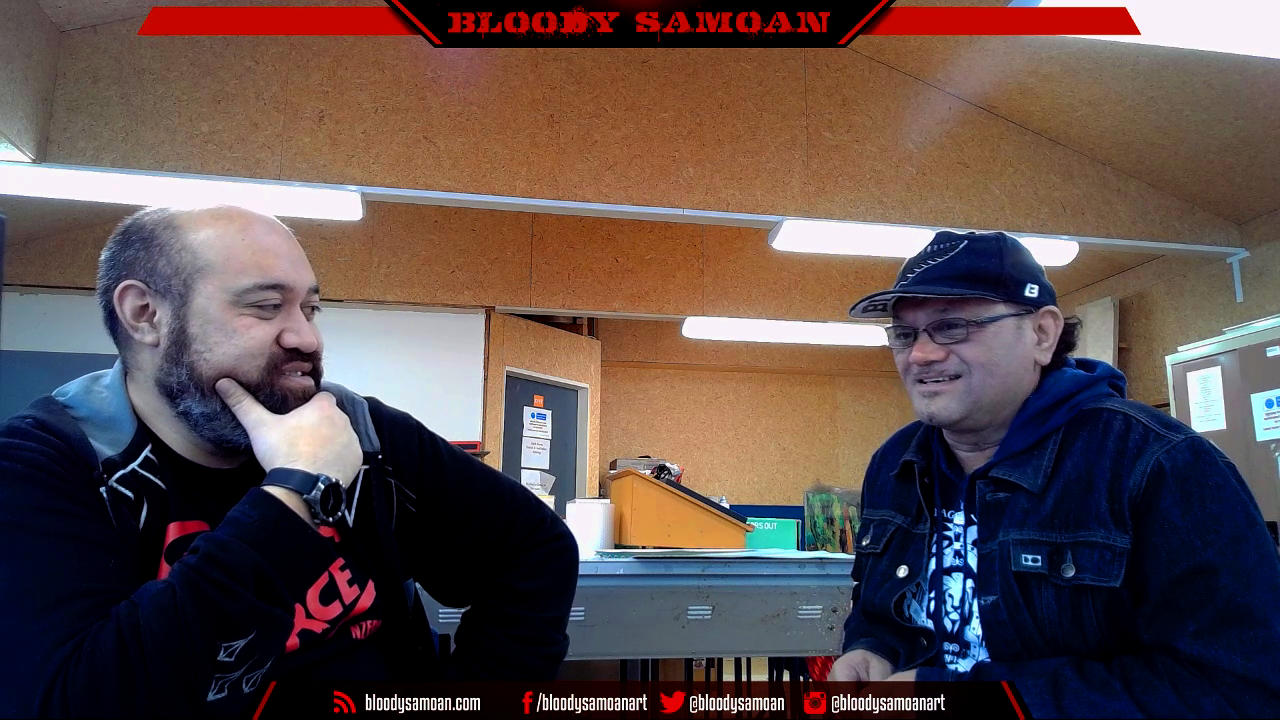
Michel Mulipola: I guess we should start with your name and what you do.
Moses Viliamu: My name is Moses Viliamu. I’m half Sāmoan/Tokelauan. My parents came to Porirua in the early 60s, so I’ve lived here my whole life. I was educated here. When I left school, it wasn’t on my radar to have a career in art but after doing a few years of office work I was like, “Oh my God! I can’t handle this!”
What really gave me pleasure was art so I took different art courses. I ended up here at Whitireia (Polytechnic) and that was the course I really loved. I got my degree and became a secondary school art teacher. I taught at Porirua College, my old school, then I taught at Tawa college.
MM: As a Pasifika artist, were there any people that you looked up to making a career in art?
MV: Yes. A guy that we all looked up to was Gus Hunter. He’s a Weta Workshop artist. He does the conceptualising for all the movies.
Before that he was doing illustrations – books, comics and everything – then he moved onto Weta. He always encouraged us to follow him into the movie sector. I tried the commercial stuff then realistic art and though I enjoyed it, it wasn’t totally satisfactory for me.
Only when I started doing fine arts I found that “Oh! This is really me.” That is what I really love to do, to express my own style, thoughts and ideas as opposed to commercial art where you’re doing something for someone else. You don’t necessarily own all of your work.
Only when I started doing fine arts I found that “Oh! This is really me.”
MM: Did you have any obstacles when making a name for yourself in fine arts?
MV: I guess the biggest obstacle is just the belief in yourself. Because in the fine arts, it’s your message and it’s your style, your thoughts. So everything is really personal. When you do your work and you’re going to display it publicly, you’re always wondering if people will like it. Being able to handle criticism that will come your way because you’re putting your own personal everything out in the public arena. People are going to share their own thoughts and just having the strength and confidence in that area, you have to accept who you are and what you’ve done.
MM: When I’m drawing graphic novels, I’m drawing 115 pages per book. So you get to a point where you can just let go. Once you create the work and put it out there, it’s no longer in your power as to how people perceive it.
I guess with fine arts, there’s more of a curation period. You’re fine tuning the art and hoping it sends the message you want it to portray. Fine arts is a lot more personal than the work I do.
How would you describe your style?
MV: My fine arts is more abstract expressionist. I love creating textures, colours and organic shapes. I’m not really into realism which is why I don’t really get into the commercial side of it. I love to be more intuitive and paint expressively. I try and create something totally abstract that maybe people haven’t seen before, which is really hard. That always seems to drive me.
MM: You’re very much about painting how you feel and I’m more towards the realistic style of illustration. I’m very line based. When I draw something, I use line work to define it rather than shading. I’m very linear and I think that’s part of the comic book influence.
MV: The work that I’ve seen you do, you do a lot of different perspectives. That’s what I really love about your work. I really love how dynamic it is.
MM: A lot of people associate comics with super heroes. But the medium of comics isn’t superheroes, it’s visual storytelling. It’s more akin to film than anything else. Whenever I illustrate, I approach my comic panels like a director sets up a shot. Each panel that you draw on the comic book page is its own artwork. To be visually stimulating to the reader, it has to be dynamic and have different perspectives and camera shots, or else you lose the reader’s attention.
MV: Well, you certainly achieved it. I kept looking, inspired by your work and thinking, “Oh man! How am I going to do that?”
MM: That’s a good segue because you’ve talked your abstract expressionist style, what was it like to illustrate the Tokelau Heroes book?
MV: It was a big challenge. Having been inspired by your work and all the dynamicism and movement, there’s lots of strength and focal points and perspectives and I’m going, “Oh man!” (laughs)
I had to do a lot of drawings. Lots of sketches. I had to really force myself not to be so abstract and try to be more realistic. How am I going to keep changing everything with every illustration? I needed to do a whole lot of sketches and think about everything before I started.
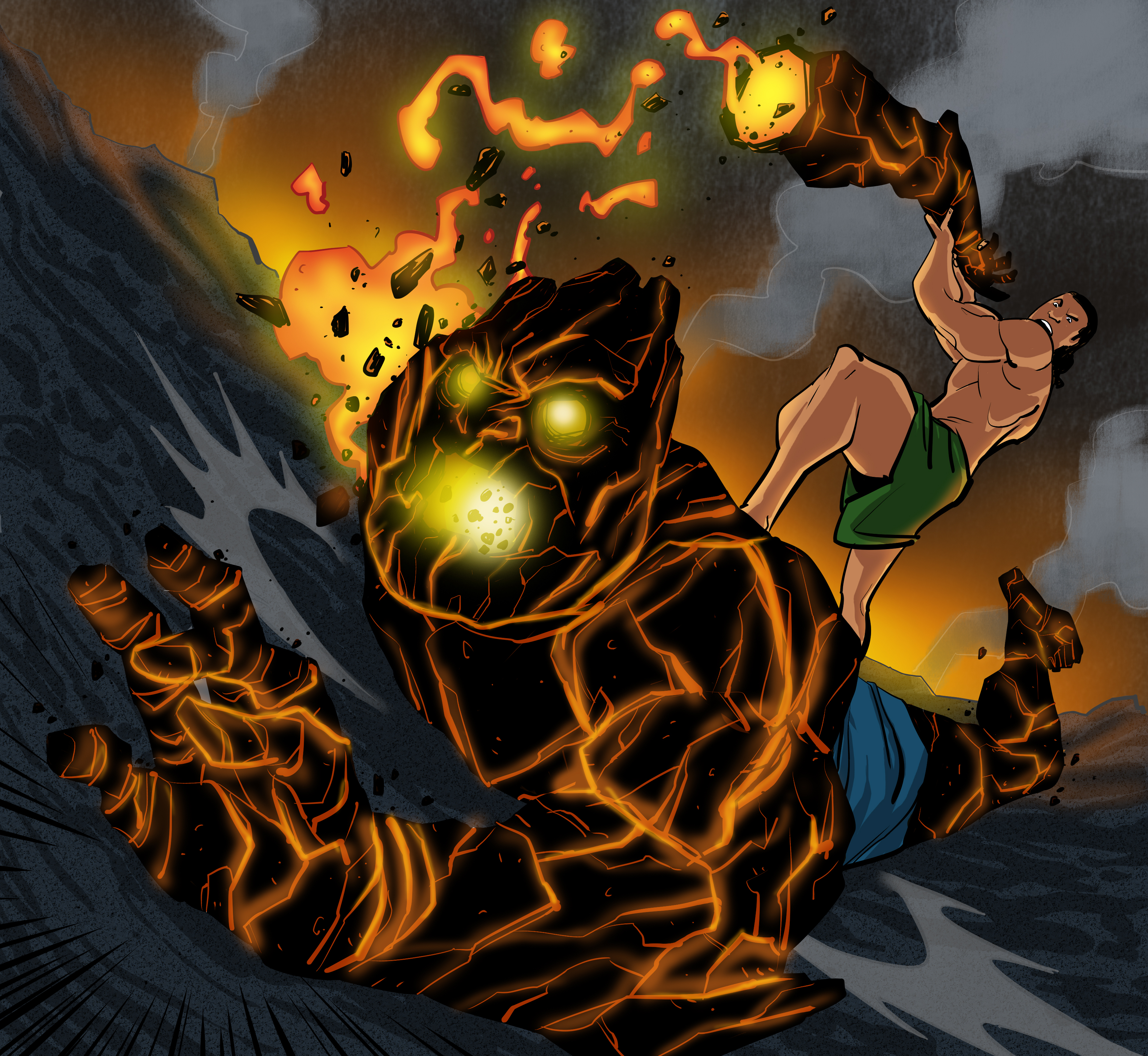
MM: As a Tokelauan artist, how did you find illustrating the myths and legends of the Tokelauan culture?
MV: I really loved reading the stories because I never knew a lot of them. I’ve always wanted to know our Tokelauan myths and legends. I think what David (Riley) did was he took a lot of the stories from his research and then he cut it down. It was a lot easier to read and to understand and get into the story. I didn’t even know that we had those stories. Growing up, I read a lot of other ones like Sāmoan, Cook Islands, Māori but I always wanted to know our Tokelauan stories. It was really moving and touching that I could finally read our own myths and legends and being able to illustrate it was an honour.
MM: That’s exactly how I felt when I illustrated Samoan Heroes. Learning the myths and legends and illustrating them, was probably the most fulfilling aspect of that job. I’m glad that David found you for Tokelau Heroes because for the Cook Islands Heroes and the Tongan Heroes books, he couldn’t find artists so I had to illustrate them. What’s cool is that with your abstract expressionist style, you still stepped up to illustrate the Tokelau Heroes book, in a style outside of your comfort zone. It showcases your maturity as an artist, understanding that this is an artistic challenge rather than running from it.
MV: Yeah, that must be a thing for illustrators and designers. You’re given a brief then it’s up to you to meet the challenge. How can we meet the brief of this client? At the same time you know that there’s gonna be a challenge but I’ll do my best. The way I went about solving it was I because there was going to be a lot of people to draw, I used a model app. I put it on my iPad and then I was able to manipulate those models and use it to do my sketching. Otherwise it would have been too hard.
MM: Creativity is just problem solving. In terms of artistic creativity, it’s very much thinking outside the box. Thinking laterally. There’s no real logical answer to the problem we have. You just use any means necessary to solve your problem.
MV: How do you do your art when you’re illustrating comics?
MM: Over the last six years I’ve been entirely digital.
MV: So you used to illustrate the traditional way on paper?
MM: Yeah. I still do traditional stuff with pens, paper and markers for commissions. But in terms of my comic work, it’s all digital.
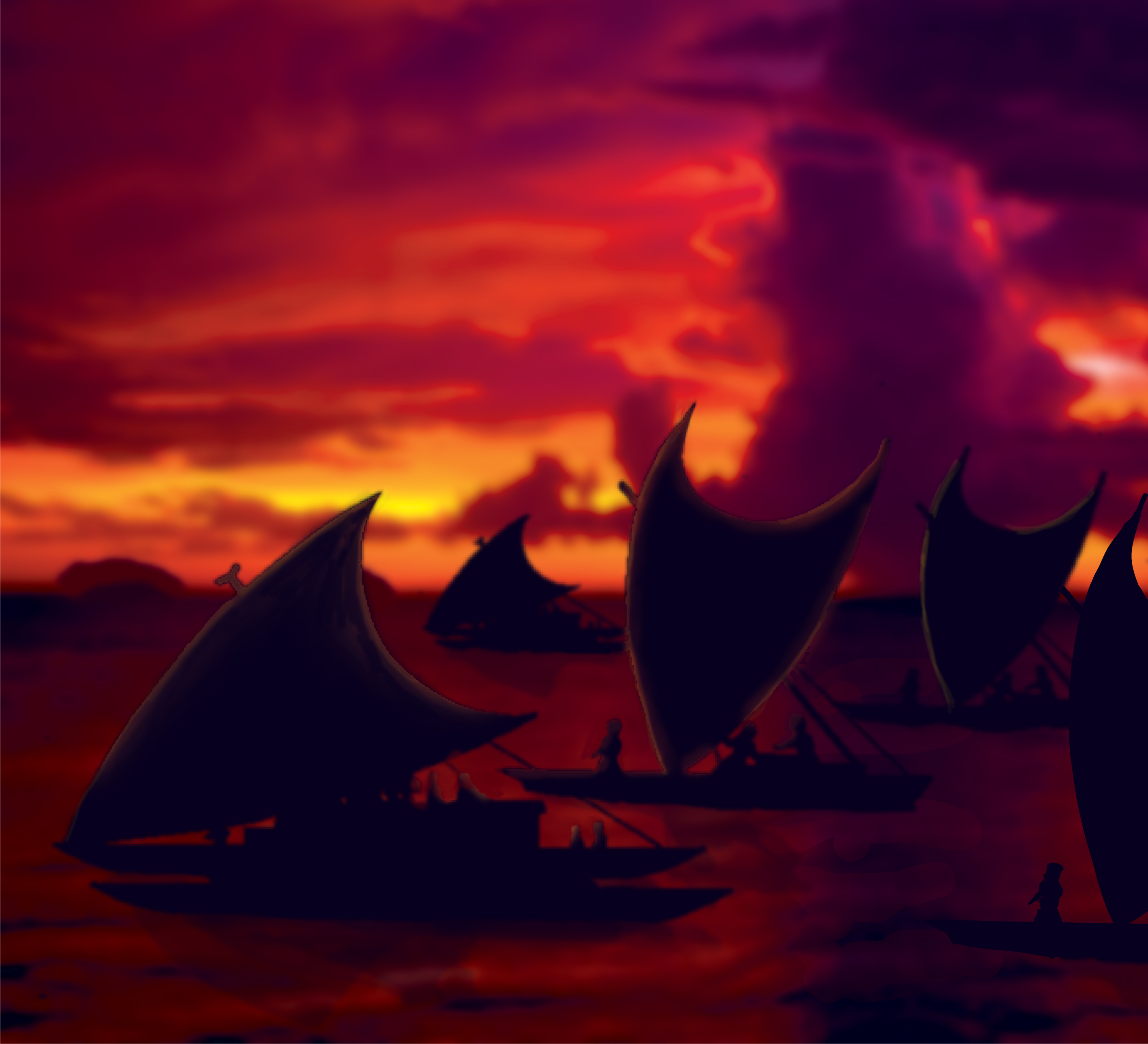
MV: What do you use? Do you use an iPad? A Wacom tablet?
MM: I have a Wacom Mobilestudio Pro, a laptop you can draw on screen with. I use a a digital illustration software called Clip Studio Paint. I’ve been using it for 12 years. I went entirely digital because of short deadlines, quick turnaround and I deal with people overseas.
What’s your preferred medium?
MV: Acrylic paint. I love oils but it smells too much. It makes me all dizzy. A bit of coloured pencils. I also use a computer to do graphic design work. I design logos, posters and things like that.
When you’re illustrating, do you just do it from your head or do you have references?
MM: I can draw people straight from my head. If it’s a particular person and I have to draw a likeness, then I use reference photos. I’ve done digital drawing demos where I ask the kids what they want me to draw. “What do you want?” “Spider-Man.” Then I just draw Spider-Man right then and there.
MV: Did you know when you were young that you were going to get into art as a career?
MM: I didn’t know if I was going to get a career in art but I always wanted to be an artist. I fell in love with comics before I started school. They just totally blew my mind and really captured my imagination. Throughout my life, comics were there. Drawing was there. I just thought, “Man, I want to be a comic book artist.” But it’s also one of those things where I was like, “How do I make that happen?”
I fell in love with comics before I started school. They just totally blew my mind and really captured my imagination.
I won $10k on a Facebook competition and I used that money to go to San Diego Comic Con in 2011. I put my portfolio up for review at DC Comics and the following day I got a callback. One of the editors had seen potential in my work and though nothing came of it, that was the affirmation that I needed.
MV: Did you do any training?
MM: No, I didn’t actually. No art school.
MV: So you’re all self-taught and…?
MM: I just learned by doing it. I made comics and made mistakes and learned from them.
MV: And you’ve won some awards and things?
MM: Yeah. Samoan Heroes has won a Storylines Notable Book Award. 2006, I won a Gibson Comic Award for Best New Zealand Artist. What awards have you won?
MV: (Laughs) No art awards but using my fine arts connections, we applied to Creative New Zealand to build a Tokelauan vaka (boat.) They gave us $25k to make our vaka back in 2011. We won the Creative New Zealand Pacific Heritage Award for building the vaka and we’re still using the vaka today. Our elders use the vaka to teach the younger generation about sailing, fishing and the whole culture and customs behind the sailing – reading of the winds and the seas.
MM: Speaking of vaka, you also designed the Tokelauan flag?
MV: Me and my friends started up a graphic design company called Hoe Mua Designs which was made of Zac Reuelu and Ernest Sami. Tokelau were looking for a flag, so we submitted around 3–4 concepts. They liked the concept based on the vaka and they wanted us to tweak it. Now it’s the flag that they use today. It’s pretty awesome.
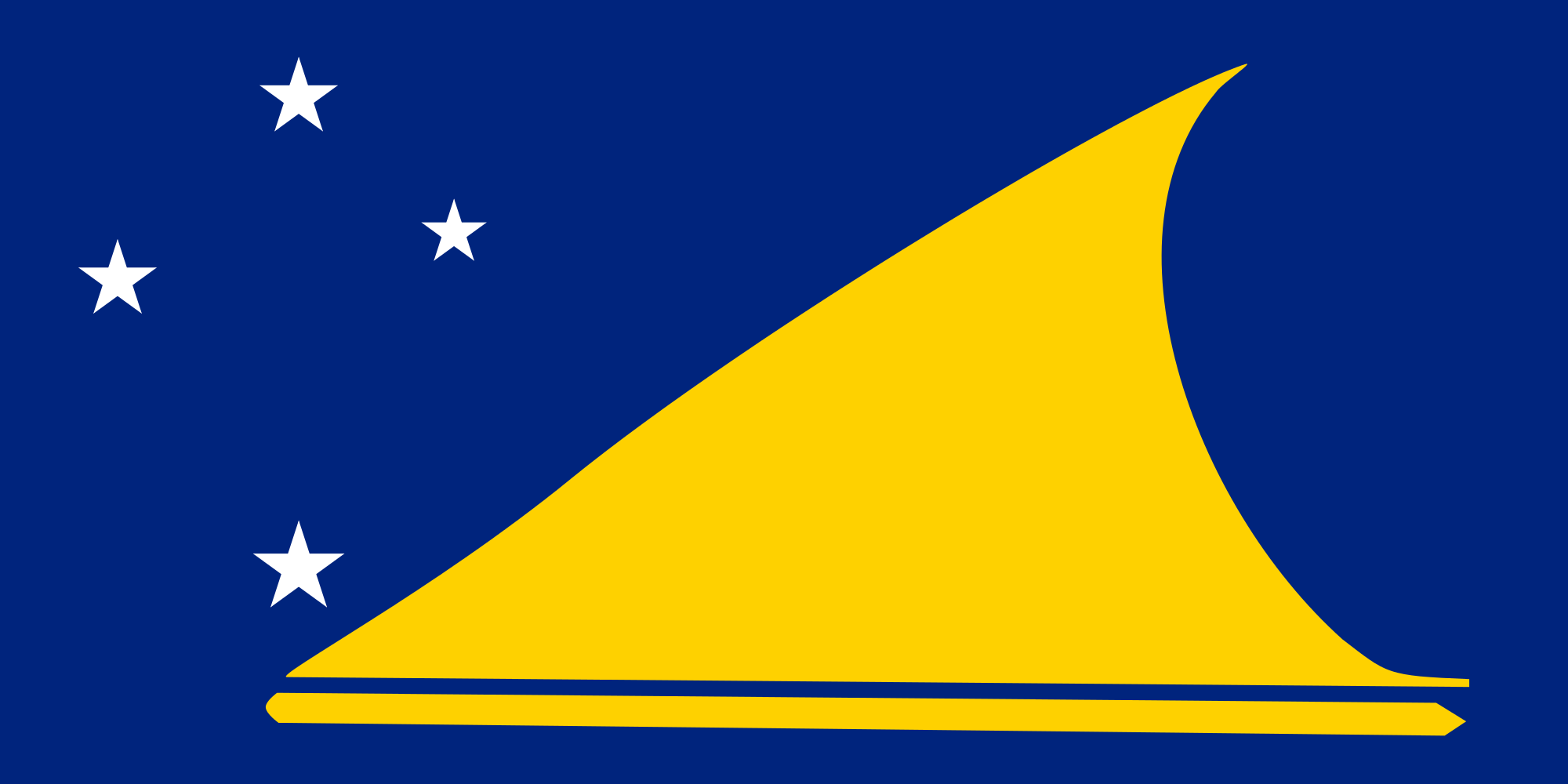
MM: How does it feel to have designed the flag for your home country?
MV: Obviously pretty proud but also try to stay humble. Designing the flag for your country, for you, for your people. We can’t really use it too much because officially we have to use the New Zealand flag. New Zealand allows us to use our flag for events like the Pacific Games.
The reason why we came up with the vaka concept was because not many people know how small Tokelau is. First time I went there, I found out how really small it is. It’s like four or five rugby fields wide.
MM: How many people reside on Tokelau?
MV: It can only fit 500 max on each atoll so Tokelau itself is only 1500 people. Because the island is so small, if you didn’t have a vaka you wouldn’t have survived. You needed it to get your food. That’s why in Tokelau, it’s a matter of life or death to have a vaka. The other islands are so far away, as well. The next closest is Sāmoa, which is at least over 500 miles. The vaka is really important for Tokelauan people.
MM: That’s why you thought to make it the symbol of the flag. That’s a good design choice.
MV: Are there any goals you want to achieve in regards to your career in art?
MM: I still want to tick drawing comics for Marvel and DC off the list. The closest I have gotten so far is illustrating trading cards for Marvel.
MV: That’s a pretty massive achievement.
MM: Yeah, but I wanna draw comics. I wanna do a comic story for Marvel. I’d love, at some point, to have a studio with other Pasifika artists doing illustrative and commercial work.
How about yourself?
MV: I guess commercially, I want to have a Pacific Arts agency. You have your designers and your writers. Then you tackle the whole area because the Pacific community is pretty huge. We should have our own companies that are thinking along those lines.
With my fine arts, maybe have a big studio where we can encourage and have a lot of Pacific artists working together. A big studio where lots of Pacific artists can banter with each other, feed off of each other and to help create together.
MM: Diversity is very important. It’s why I loved working on Sāmoan Heroes and why you loved working on Tokelau Heroes as artists of those respective cultures telling our stories. Recently I did a comic for the NZ School Journals called, Once a Panther (Lift Education, 2019.) It was written by Victor Rodger, a Sāmoan playwright. It’s about the Polynesian Panthers and the Dawn Raids and this story is being made available to kids in schools. The fact that it’s written by a Sāmoan and illustrated by a Sāmoan, and we get to tell this story? That’s pretty choice.
Do you have any advice for aspiring artists?
MV: Believe in who you are and yourself and just work. Work hard and believe in who you are.
MM: My advice is for anyone in general, not just artists. Do the work and don’t be a dick. That’s it. That’s all you need to succeed.
This interview has been edited for clarity.
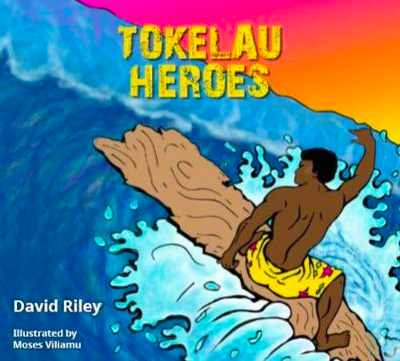
Tokelau Heroes
By David Riley
Illustrated by Moses Viliamu
Published by Reading Warrior
RRP: $24.95
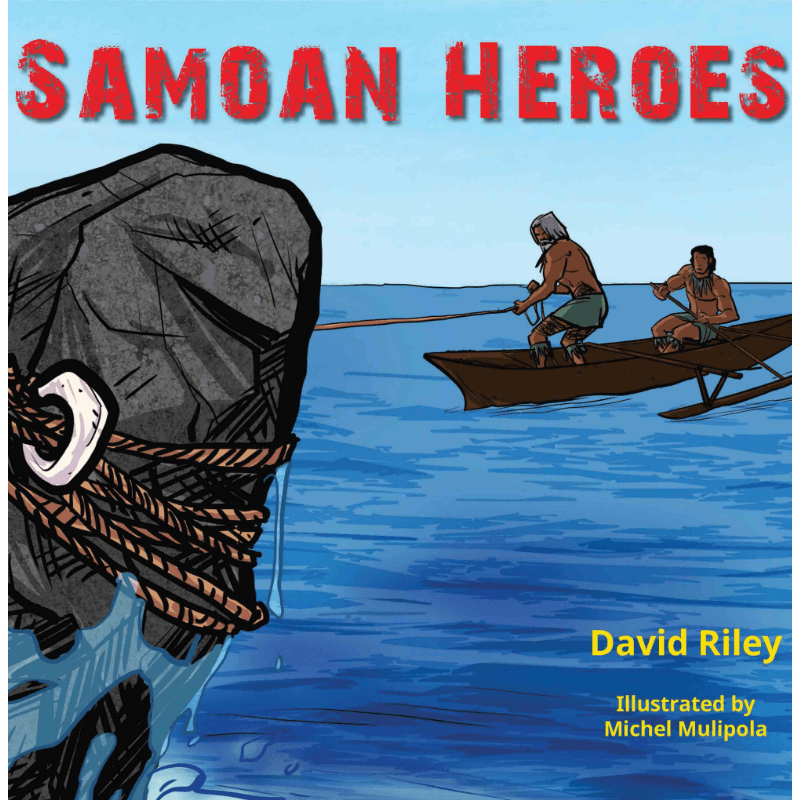
Samoan Heroes
By David Riley
Illustrated by Michel Mulipola
Published by Reading Warrior
RRP: $24.95



